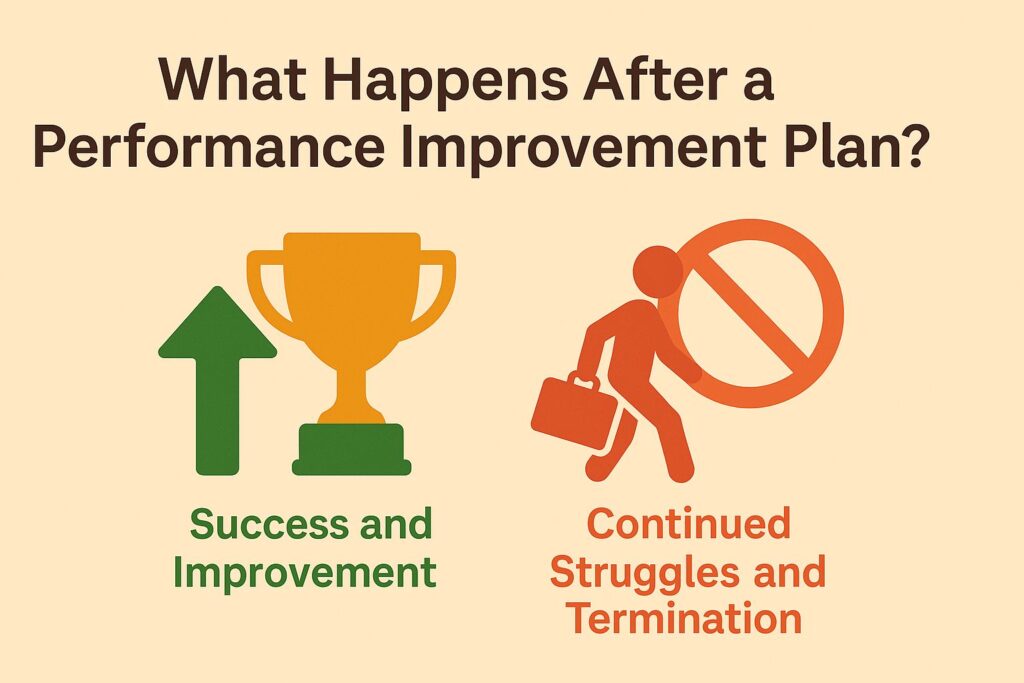
How to Make a Performance Improvement Plan
In today’s fast-paced work environment, ensuring employee performance, job performance is crucial for organizational success, business objectives. A Performance Improvement Plan (PIP) provides a clear method to support employees who are not meeting expectations in improving their skills and work output.
This article by PEOCOSTS.COM explores the necessity of PIPs, signs that an employee may need one, and a step-by-step guide on creating and implementing an effective plan.
Whether you’re a manager or HR professional Knowing how to use a PIP can create a more effective workplace and help people grow.
What is a Performance Improvement Plan (PIP)?
A Performance Improvement Plan (PIP) is a detailed document that sets out specific goals to help an employee improve their work, address identified issues, and provide a clear action plan for growth.
It is a formal way to share performance expectations and the necessary steps to achieve improvement, maintaining responsibility throughout the process. PIPs can include clear results and deadlines that both the employee and the organization can use to track progress and judge success.
Why is a Performance Improvement Plan Necessary?
A Performance Improvement Plan (PIP) is important because it offers a clear way to address work issues, making sure employees know what is expected and get the help needed to do better.
This also builds a sense of responsibility and involvement. By highlighting specific issues, a PIP aligns employee goals with the company’s goals, which increases overall workplace productivity and morale.
What Are the Signs That an Employee Needs a PIP?
Spotting indicators that an employee needs a Performance Improvement Plan (PIP) is important for dealing with performance problems early. Common indicators include consistent failure to meet performance standards, performance expectations, lack of engagement, frequent feedback about weaknesses, and a decline in productivity metrics, success metrics over time. Recognizing these signs early can facilitate timely interventions and support for the employee’s development.
For example, if an employee consistently misses project deadlines, it may reveal underlying issues with time management or resource allocation.
A noticeable dip in motivation, such as decreased participation during team meetings or reluctance to take on new responsibilities, can further highlight the need for a PIP.
Negative feedback from peers, such as complaints regarding collaboration or teamwork, serves as another critical sign.
By closely monitoring these performance areas, managers can better see if an employee is struggling to meet the set key performance indicators (KPIs) and create a more supportive work environment.
How to Create a Performance Improvement Plan?
Creating a good Performance Improvement Plan (PIP) starts by spotting performance problems and setting clear goals that match the employee’s skills and the company’s needs.
The PIP should list specific goals, measurable results, and a plan that includes feedback and resources needed for the employee’s growth.
This joint effort makes sure employees know what is expected of them and have what they need to do well.

1. Identify the Problem
The first step in creating a Performance Improvement Plan (PIP) is to clearly identify the specific performance issues that need to be addressed. This includes a thorough assessment of the employee’s strengths and weaknesses, using clear metrics and feedback from various sources to fully understand the situation.
By identifying the specific areas that need improvement, the PIP can be customized to help the employee develop.
To improve how we evaluate, we can use both performance reviews and skills tests, performance assessment. These tools help gather feedback from both bosses and coworkers, feedback mechanisms, giving a complete view of the employee’s performance.
Using set evaluation guidelines and performance measures helps make things clear and shows important areas where improvements are possible. Encouraging open conversation and asking for helpful feedback helps the PIP stay a flexible and active document aimed at supporting professional growth.
2. Set Specific and Measurable Goals
Setting specific and measurable goals is a critical component of a successful Performance Improvement Plan (PIP), as it provides a clear roadmap for the employee’s development and establishes performance metrics that can be tracked over time.
The SMART criteria help businesses set clear goals that align with the company’s main objectives.
For example, a goal that is specific might involve increasing monthly sales figures, performance goals by 15%, while a measurable aspect would involve tracking sales performance through a monthly report.
Achievable goals should challenge the employee but remain realistic, such as enhancing customer satisfaction ratings from 80% to 90% within six months. The relevance of these goals must also be clear, demonstrating how they contribute to team success or organizational growth.
Setting a deadline reinforces urgency, ensuring the employee can stay focused and motivated. Altogether, when effectively implemented, such goals can lead to improved employee performance, increased job satisfaction, and a more productive workplace culture.
3. Establish a Timeline
Establishing a timeline is essential for a Performance Improvement Plan (PIP), as it sets clear expectations for the employee and defines the duration for achieving the outlined goals. A clear schedule helps monitor progress and responsibility. It also motivates employees to concentrate on achieving their performance goals by the deadline.
- To create a successful timeline, break down each goal into small, achievable steps. Make sure these steps are realistic and match the main goals of the PIP.
Finding a balance between speed and what can actually be done is essential. Keeping things moving is important, but setting deadlines that are too tight can cause stress and exhaustion.
Regular check-ins should be scheduled to assess progress, performance tracking, allowing for adjustments to the timeline if necessary and reinforcing accountability.
These meetings help us recognize achievements, solve problems, and keep communication clear, increasing the chances of success.
4. Outline the Consequences of Not Meeting Goals
Explaining what happens if employees do not meet the targets in a Performance Improvement Plan (PIP) is an important step to make sure they know the importance of meeting their performance expectations. By clearly stating what needs to be fixed and what might happen if things don’t get better, it encourages responsibility, motivating employees to work towards success and take charge of their growth.
This open communication highlights the need to meet performance standards and makes sure employees know about the support they can get to do well.
For instance, if an employee fails to achieve the established targets, they might face a structured approach that includes additional training sessions, closer performance monitoring, or even temporary reassignment of responsibilities, corrective actions to better align their strengths with company goals.
The intention is not to punish but to provide a clear path towards improvement, instilling confidence and the opportunity for meaningful growth.
5. Talk openly and write down all details
Effective communication and thorough documentation are paramount throughout the Performance Improvement Plan (PIP) process, ensuring that all parties are aligned on expectations and progress. By keeping detailed notes of meetings, feedback, and methods for tracking performance, performance optimization, employees and managers can look back at recorded progress and difficulties, creating a more supportive atmosphere for growth and improvement.
Open lines of communication act as the backbone of this process, enabling employees to voice concerns and managers to provide constructive feedback.
Best practices include scheduling regular check-ins and keeping detailed notes on discussions about performance metrics, which serve as essential references.
Utilizing performance documentation templates can standardize the feedback process, simplifying tracking and enhancing clarity. Helping employees write about their own progress can make them more responsible for their growth.
This team approach increases accountability and creates a positive workplace, where everyone feels heard and valued.
How to Implement a Performance Improvement Plan?
Putting a Performance Improvement Plan (PIP) into action requires commitment from both managers and employees, ensuring support is provided throughout.
This involves regular meetings, access to coaching materials, mentorship, and chances for useful feedback, all essential for tracking progress and creating a supportive environment for employees to grow and improve.

1. Schedule Regular Check-ins
Scheduling regular check-ins during the implementation of a Performance Improvement Plan (PIP) is essential for maintaining open lines of communication and ensuring that progress is being tracked effectively. These meetings provide an opportunity to review performance metrics, performance evaluation criteria, address any challenges that may have arisen, and reinforce accountability for both the employee and the manager.
Ideally, these sessions should be structured on a bi-weekly basis, allowing ample time for the employee to implement feedback while keeping accountability fresh.
Each meeting should have a clear agenda, concentrating on the specific SMART goals in the PIP, allowing for direct feedback that is both helpful and supportive. Managers can use this time to acknowledge progress, no matter how incremental, and identify any barriers that may impede employee engagement and growth.
By regularly checking progress with assessment tools, both parties can work together to adjust the plan as needed, making sure the employee feels supported while getting better through ongoing improvement strategies.
2. Provide Support and Resources
Providing adequate employee support and resources is a critical aspect of implementing a Performance Improvement Plan (PIP), as it equips employees with the tools they need to achieve their performance objectives and align with organizational goals. This may include access to training programs, mentorship, performance coaching, and other resources that help people grow professionally and improve their skills.
Customized resources are important in dealing with the specific problems each employee might encounter during this time.
For example, focused coaching sessions can help people concentrate on specific areas they need to improve their skills assessment, while regular mentorship offers direction and encourages employee accountability and responsibility. Providing workshops or online training sessions can improve skills in important areas, focusing on the need for a match between the help given and the specific performance problems encountered.
When organizations offer resources that match individual needs, they create an environment where employees can develop and do better, building a culture that values performance and boosting the organization’s success.
3. Offer Constructive Feedback
Providing useful performance feedback is important when implementing a Performance Improvement Plan (PIP), as it helps employees understand how to improve their performance and meet their goals. Feedback should be clear, practical, and centered on performance measures to help employees improve their skills and know how to do better.
By using employee evaluation tools and carrying out detailed performance reviews, managers can offer clear feedback that highlights strengths and points out areas for improvement.
For example, when an employee has trouble managing their time, suggesting methods like prioritizing tasks or using time-tracking tools both highlights the issue and provides clear solutions.
Best practices in feedback involve consistently checking in with the employee using feedback loops, maintaining an open dialogue about progress, and recognizing achievements along the way.
This method improves feedback and creates a supportive setting where employees feel appreciated and encouraged to achieve their objectives.
4. Recognize Improvements
Acknowledging an employee’s progress during a Performance Improvement Plan (PIP) is important for keeping them motivated through employee motivation techniques and supporting good behavior. Seeing progress increases confidence and encourages employees to continue working on their goals, resulting in better outcomes for both the individual and the company.
Various ways can be used to make recognition significant and effective. Public acknowledgment during team meetings or through company-wide communications can provide a sense of belonging and appreciation, while tangible performance outcomes, such as bonuses or promotions, serve as powerful motivators.
Informal meetings can encourage open talks, letting managers give quick feedback and help with employee development plan strategies. This active method shows how the employee has progressed and demonstrates that the organization values its staff, linking recognition to increased motivation and productivity.
What Happens After a Performance Improvement Plan?
After finishing a Performance Improvement Plan (PIP), the results can be quite different based on how well the employee meets the set goals through effective goal alignment and improves their work.
Success involves reaching the goals laid out in the PIP, which leads to employees staying longer and more chances for promotions, helping with career progress and planning ahead.
If problems persist, additional help may be offered or, in some situations, employment may be terminated.

1. Success and Improvement
Success and improvement following a Performance Improvement Plan (PIP) are defined by the employee’s ability to meet or exceed the performance metrics established at the beginning of the process. This success shows the person’s progress and helps the organization work better and be more productive.
To succeed, employees should concentrate on clear targets like improving their abilities through competency assessment, working in a more organized way with strategies like project management, or cooperating better with coworkers.
Regular feedback from supervisors during this time can provide useful information, helping employees adjust their methods and plans if necessary, improving performance and measuring results.
When people make big progress in these areas, it shows personal success and encourages a workplace culture of responsibility and high standards, emphasizing performance vs potential and talent development.
Reaching success affects personal accomplishments and also strengthens the organization, increases teamwork, and raises profits. This creates a helpful setting where everyone prospers by making decisions based on data and engaging strategies.
2. Continued Struggles and Termination
If an employee keeps having trouble after a Performance Improvement Plan (PIP), further steps like behavior modification might be needed, which could end in job termination. Make sure you handle this step with care. Consider all possible ways to support the employee before making a decision that impacts their job.
Evaluating the situation requires thorough documentation of the employee’s performance, detailing specific areas where expectations have not been met. It’s important to keep communication clear during the process. Use measurable criteria and feedback from different sources to make sure the evaluation is fair.
Managers should think about outside elements that might have affected the employee’s performance, as these factors help explain the whole situation. Letting employees talk about their concerns can help managers clear up any possible confusion.
The goal should always be to create a work environment focused on responsibility, growth, and fairness, where making changes is seen as important to keep up with company standards.
Written by Carol Sanders
Harvard University graduate with a degree in psychology and human resources.
Owner of a PEO consulting firm in Massachusetts and contributing writer for PEO Costs.


